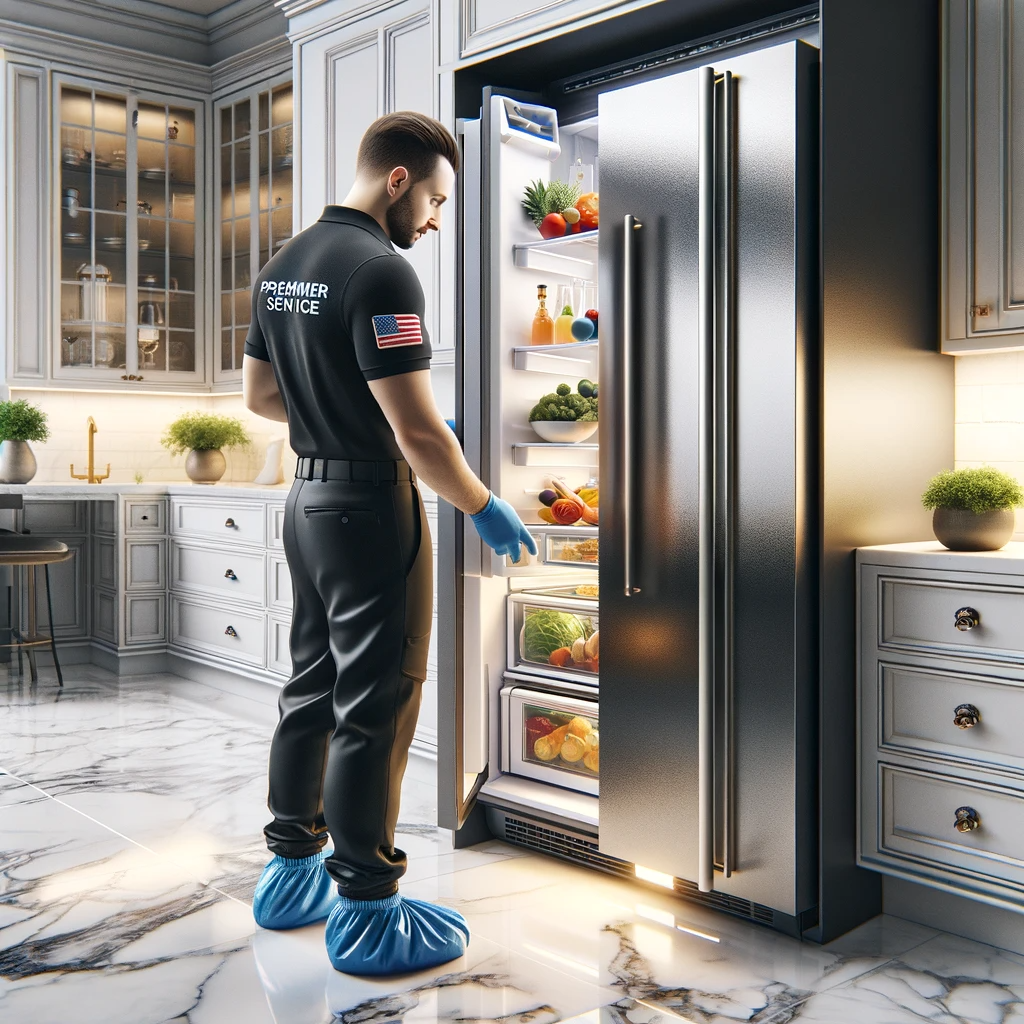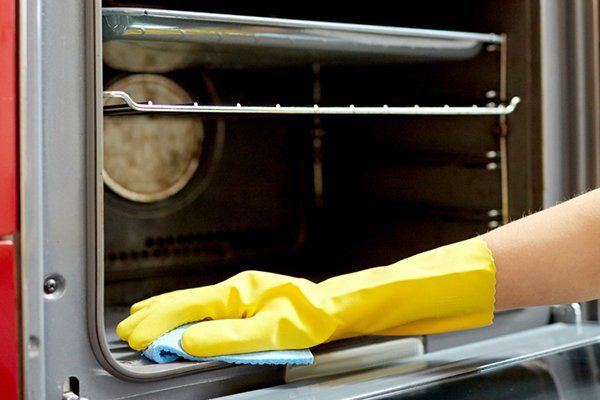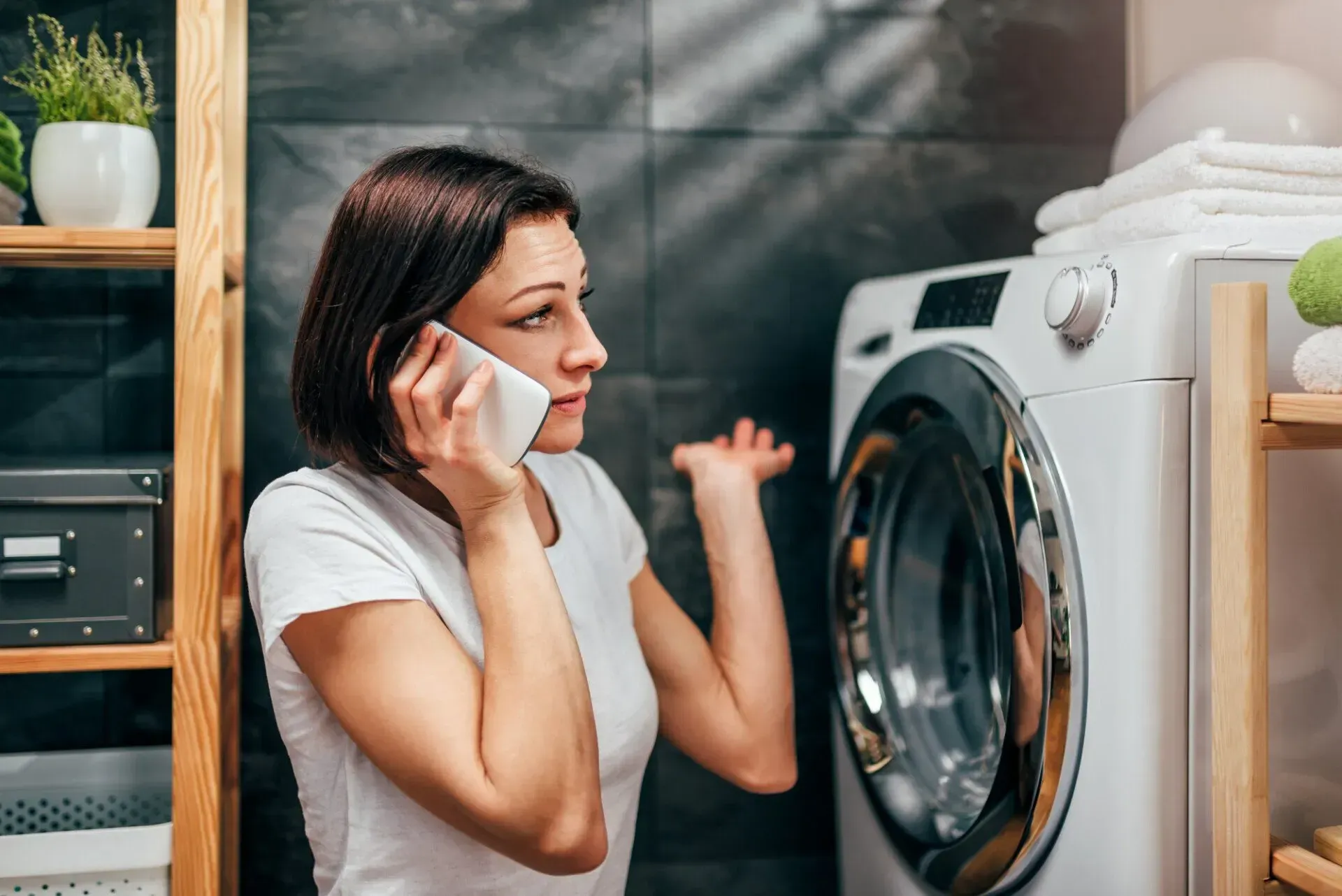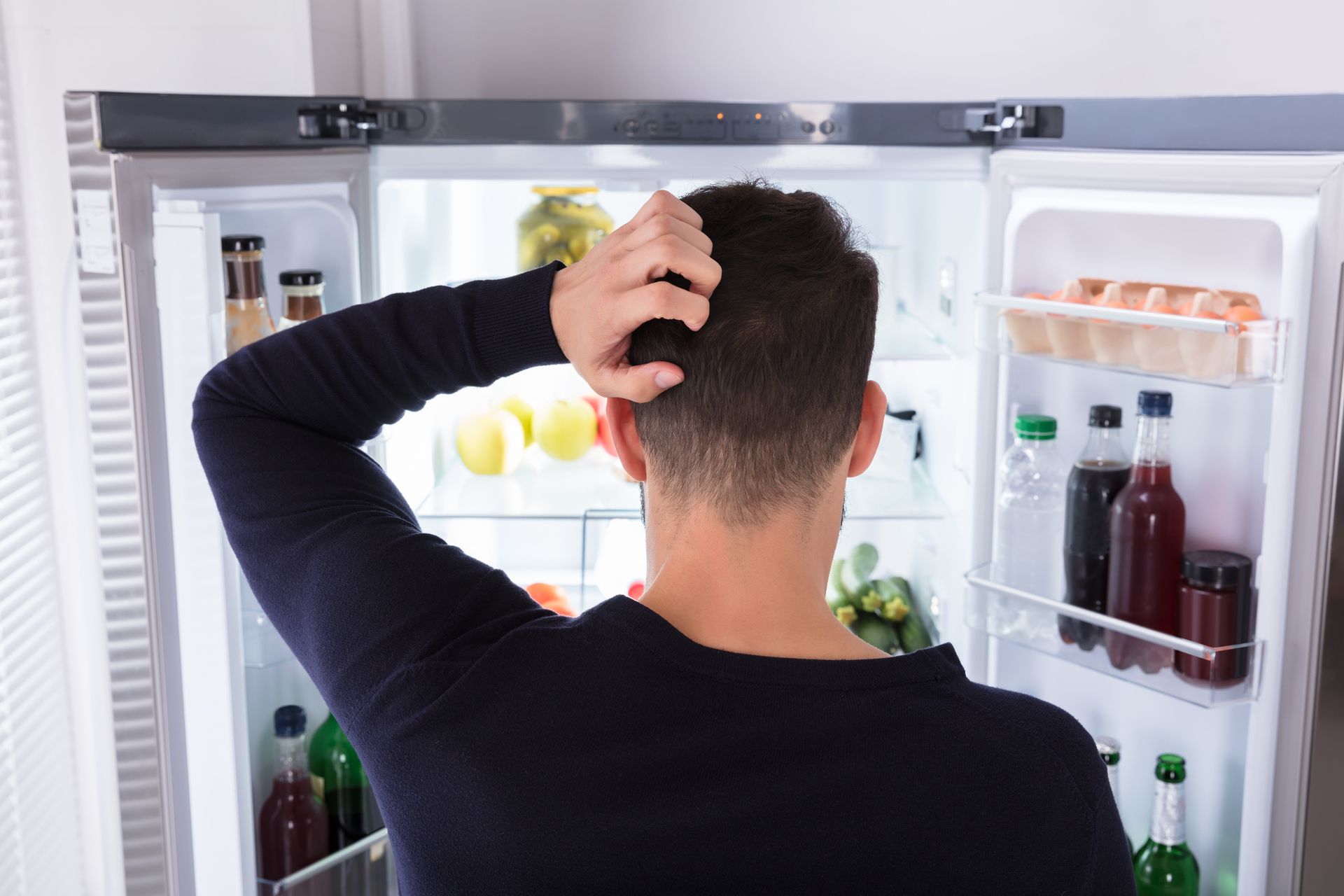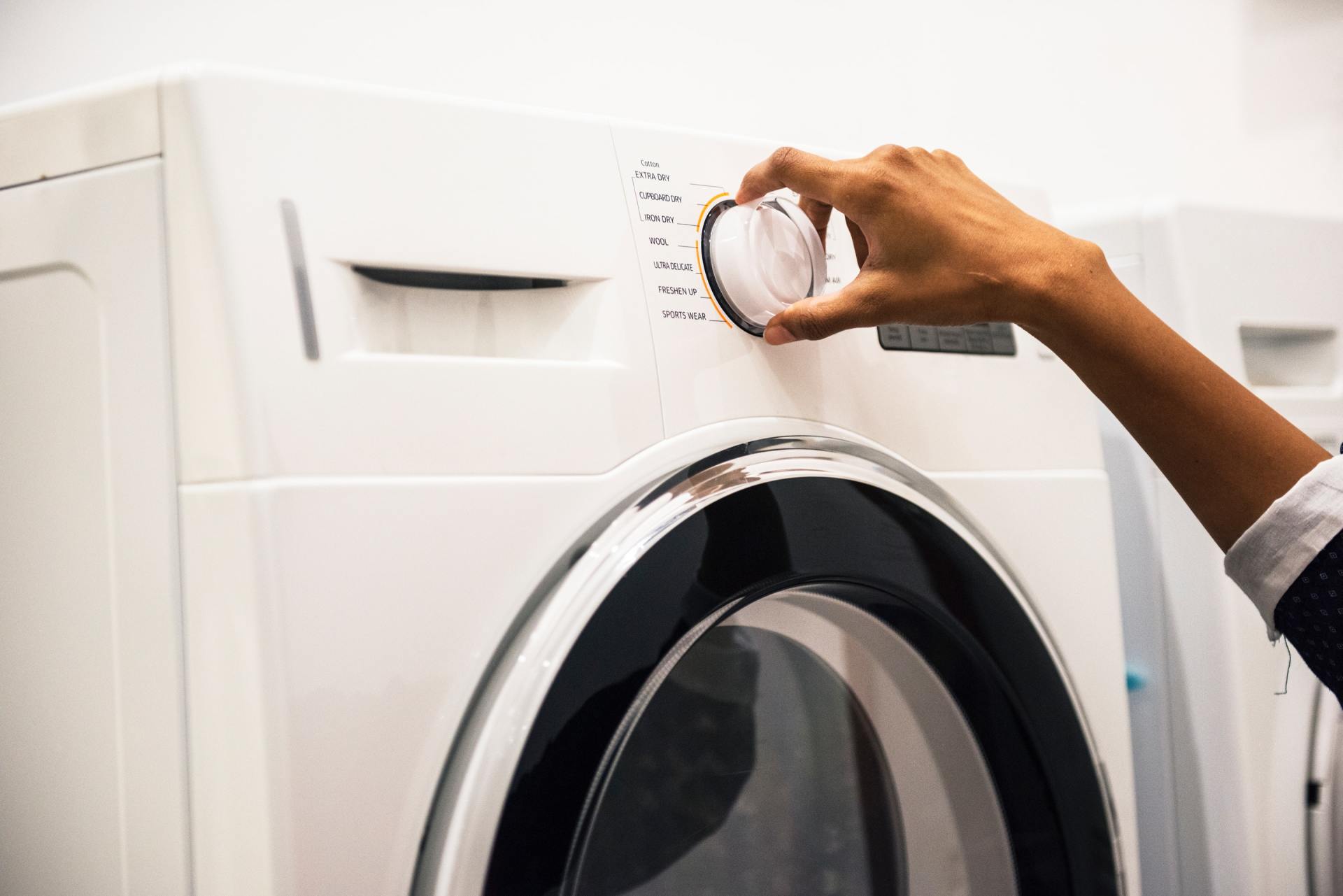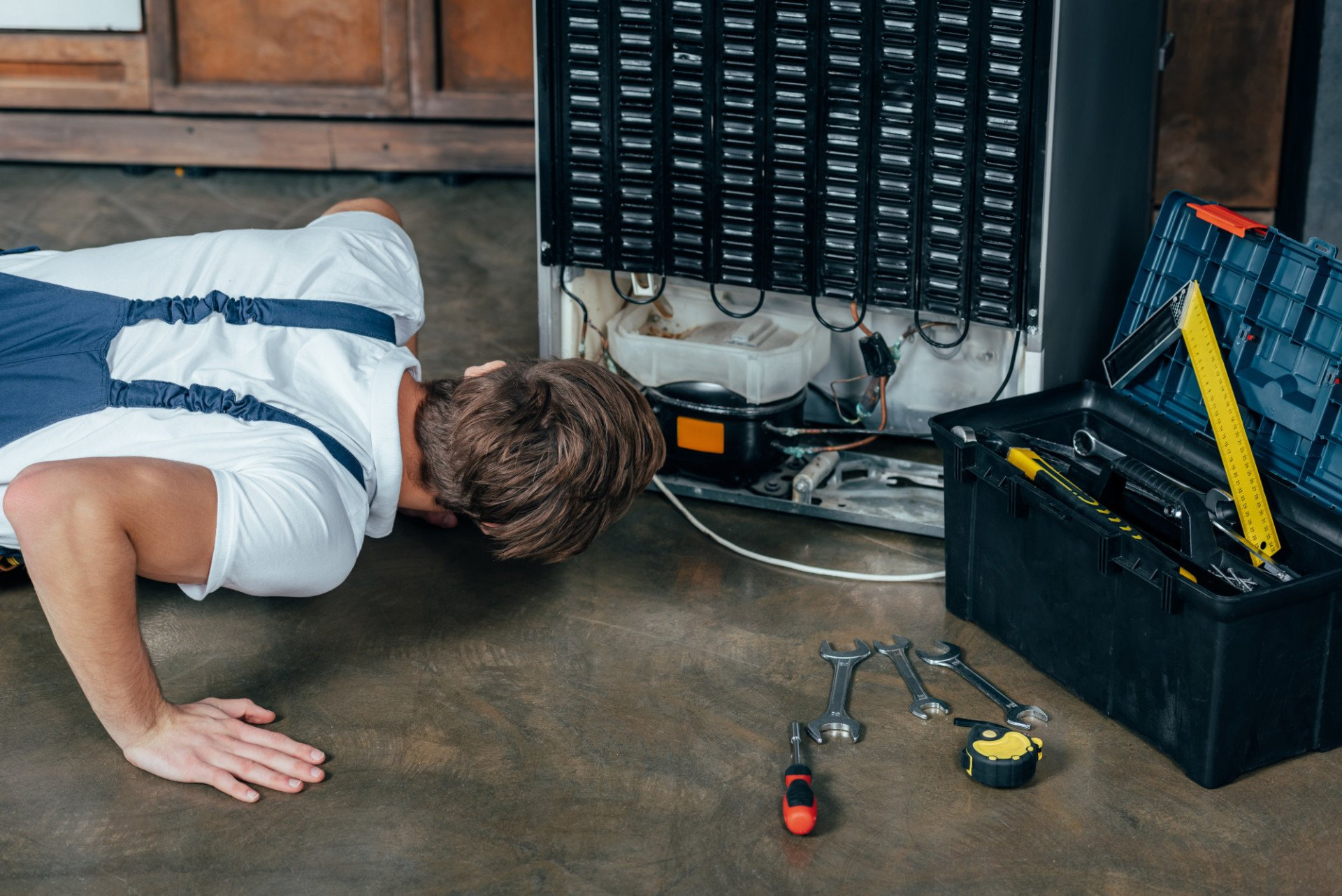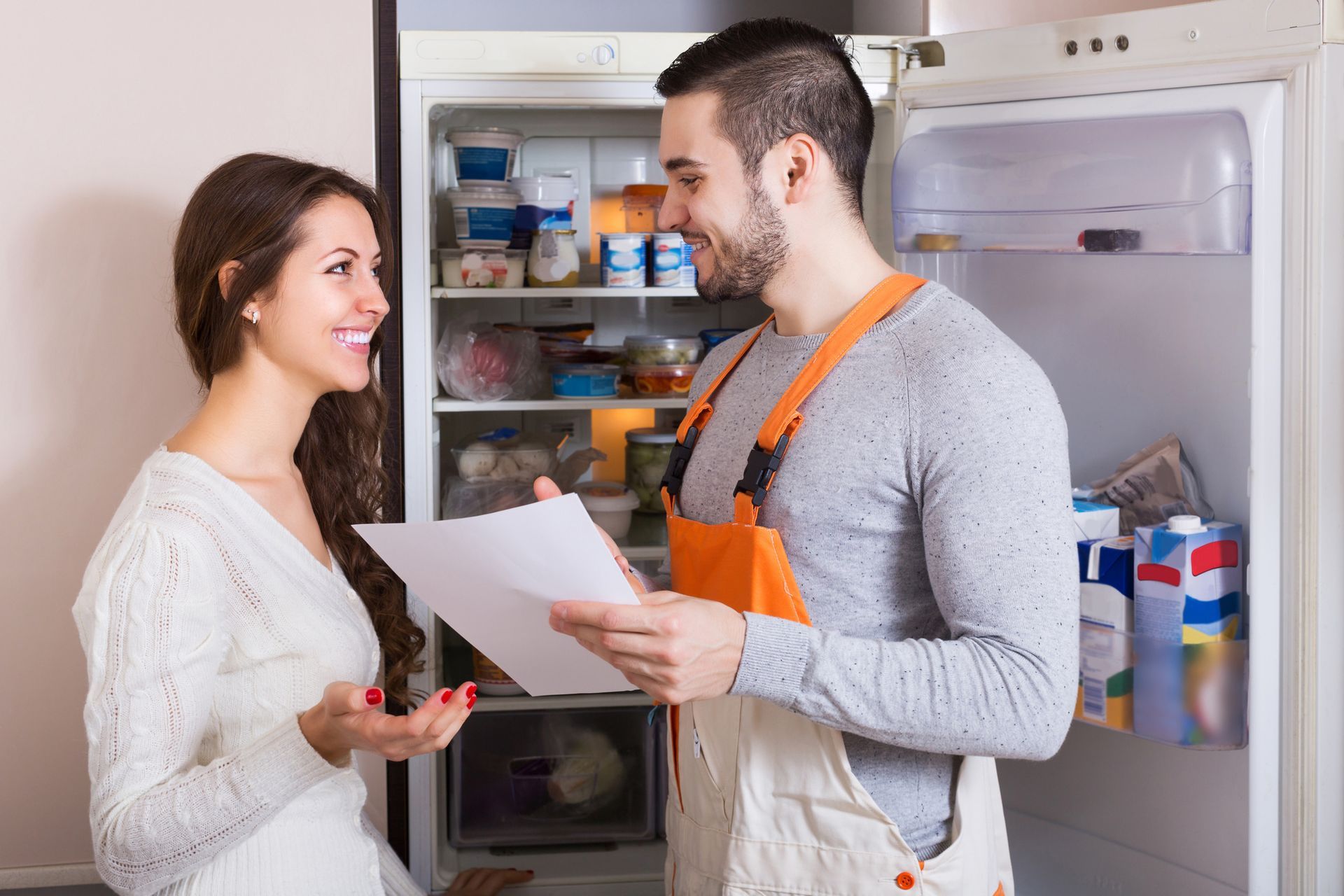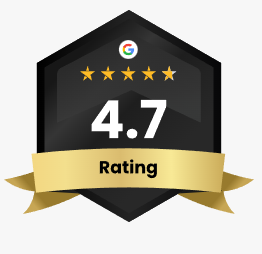Why You should Never Run A Self Clean Oven Cycle & A Safer Alternative
There are a few universal “dreaded” jobs everyone just hates to do—among the top ranked, ironing their clothes and cleaning their oven.
So, it’s likely when you bought your last oven, you were really excited to see that it had a “self-cleaning” feature. Goodbye to the days of smelly cleaner fumes and back-breaking scrubbing, and hello to a sparkling clean oven with just the touch of a button.
Not so fast!
While oven manufacturers have tried to develop features that take the “work” out of housework, the self-cleaning component of many newer models can actually cause some serious problems with your appliance.
Surprisingly, nearly 20% of our oven repairs are related to self-cleaning problems. We’d like to help you avoid major issues with your own oven, so let’s examine the process and the potential concerns:
What is a self-cleaning oven?
A self-cleaning oven is a feature on many modern ovens that burns off cooking spills and splatters with an extremely high temperature (932 F° or 500 C°) to aid in cleaning. A cycle typically takes several hours to complete; and for safety measures, automatically locks the oven door closed until it has sufficiently cooled.
Self-cleaning ovens often cook more efficiently as they are manufactured with more housing insulation to withstand the high temperature needed during cleaning.
Is it worth having a self-cleaning oven?
Let’s take a look at some of the pros:
- Convenience—obviously, the primary appeal of a self-cleaning oven is that you won’t have to use harsh oven cleaners or scrub spills and burned on food by hand. You can spend the three to four hours during the self-cleaning process to do other chores or something more enjoyable.
- Energy Savings—your oven is equipped with extra heavy insulation to help it achieve the high temps needed for cleaning. This means less heat loss during regular cooking and more efficient energy use. If you run the self-cleaning cycle immediately after cooking, the already high oven temperature will reduce the energy used to get it up to the maximum level needed.
- Cost—appliance manufacturers suggest the extra cost of purchasing a self-cleaning oven is offset by its convenience and time-saving attributes. They also indicate that the energy savings achieved during cooking (due to extra insulation) and no need to purchase pricey chemical cleaners also balance out the initial expenditure.
The big reveal.
Now that we’ve examined exactly what self-cleaning ovens are designed to do, let’s really understand the negative impact and potential hazards associated with this feature.
1. Major Parts Damage
The extremely high temperature required to run the self-cleaning cycle can significantly compromise major components of your oven.
- Locking mechanism
Replacing door locking mechanism affected by self-cleaning feature.
This is the assembly that is supposed to lock and unlock automatically after the cycle is complete. It’s common for this to malfunction and get stuck in the locked position. This will require a service call and part replacement.
- Thermostat/Thermal fuses
Brand new oven thermostat
These safety features control the temperature settings for conventional cooking. They are positioned on top of the oven or on the oven walls and can be damaged or “pop” from the high heat. This can lead to inaccurate temperature readings to under cook or overcook your food (a health hazard) or make the oven stop working entirely. This will also require professional oven repair.
- Electronic boards/Touch panels
Burnt main board
These control units, aka “the brain,” work together to make sure your oven responds to your orders. These components sit on top of the oven and can be affected by the intense heat generated from self-cleaning. You may see error codes, the oven may turn on and off at will, or everything may just shut down completely. These parts are very expensive to replace and will definitely require an appliance technician to correct.
- Wires and contact terminals
Back wall oven wires and main board connectors are affected by extreme temperatures of self-cleaning mode
A maze of wires and connectors distribute electricity to all parts of your stove. While they are covered with thermal insulation to protect them from the heat of normal cooking, the extreme and prolonged temperature needed for the self-cleaning mode may melt the insulation and damage wiring. Pinpointing the exact problem area could require numerous visits and significant troubleshooting.
- Miscellaneous interior components
Oven heating element broke in four places after running the self-cleaning mode several times.
Everything from the light bulbs and glass housings to thermal sensors to the enamel inside your oven could be damaged from the process. While these parts may not fail on the first use, continued applications will definitely compromise every part inside your oven.
If your oven shows an error code during or soon after using the cleaning mode, it’s likely related. Consult your owner’s manual to identify the error code and contact General Appliance Service to schedule a quick-response service call. Here’s a quick table of error codes for Whirlpool, Maytag, Frigidaire, Electrolux, GE (General Electric), Ikea and Kenmore range stoves:
Newer Whirlpool and Maytag Range Fault Codes
Some Kenmore and Ikea ranges are built by Whirlpool
| Errors – Locking mechanism | Errors – Electronic Oven Controls (EOC) |
|---|---|
| F5 – E1 | F1 – E0 |
| F5 – E2 | F1 – E1 |
| F5 – E3 | F1 – E2 |
| F5 – E4 | F1 – E4 |
| F5 – E5 | F0 |
| F5 – E6 | F1 |
| F9 | F2 |
Newer Frigidaire and Electrolux Range Fault Codes
Some Kenmore ranges are built by Frigidaire
| Errors – Locking mechanism | Errors – Electronic Oven Controls (EOC) |
|---|---|
| F90 | F10 |
| F95 | F11 |
| F8 | F12 |
| F9 | F13 |
Newer GE (General Electric) Range Fault Codes
| Errors – Locking mechanism | Errors – Electronic Oven Controls (EOC) |
|---|---|
| FC | FF or FFF |
| F0 or F1 or F2 |
2. Dangerous Smoke, Odors and Carbon Monoxide
Failure to remove bigger pieces of food debris or liquid from your oven prior to running the self-cleaning feature can lead to excessive smoke and foul odors. In addition, those pieces may not break down into ashes but bake on even harder. Sugary foods and spills can create enough smoke to set off fire alarms or cause eye and breathing issues.
Worse yet, a study by the North Iowa Municipal Electric Cooperative Association discovered that carbon monoxide is produced when food residue is burned during the self-cleaning cycle. This poisonous gas is odorless, tasteless, and invisible. Carbon monoxide is responsible for thousands of injuries and deaths every year. It’s critical that you open windows and run an exhaust fan to dissipate gas fumes during the cleaning process. Keep a working carbon monoxide detector in your home as there is no way to completely eliminate carbon monoxide emissions when using this function.
3. Family Safety
Children and pets can be at great risk of burns as the exterior of the oven also gets extremely hot, so you should never leave kids or animals in the kitchen unattended while cleaning.
Toxic fumes emanating from the smoke cloud can also be dangerous to anyone suffering from asthma or respiratory diseases. The Teflon coating inside your oven can break down when exposed to high temperatures and inhaling the fumes can lead to breathing issues, coughing, sweating, chills and flu-like symptoms.
Animals, especially birds, are also at risk from smoke and fumes. Large amounts of oxygen are required to maintain a bird’s flight muscles. The toxicity in the off-gasses can quickly permeate through the bird’s body and even cause death.
Ventilating the kitchen is not sufficient to protect your family or animals from breathing in harmful fumes. If you use the self-cleaning feature on your oven, make sure family members (including children) and animals are as far away from the room during the process.
4. Fire Hazard
Last, but certainly not least, the self-cleaning feature can present a fire hazard. Even if you’ve removed all the larger food particles, you’ll likely have grease or cooking oil splatters and spills to burn off. With an inside temperature exceeding 500° C, and a flash point (the temperature at which items can self-combust without an ignition source) between 750 to 815°F° or between 400 to 435° C, your leftover pepperoni grease can start on fire.
A word of advice: If your oven does catch on fire during the clean cycle, don’t try to put it out. Even if the oven has cooled sufficiently for the door to open, doing so will allow oxygen to rush in and fuel the flames. Obviously, if it is fully engulfed, get out of the house and call 911.
So, now what?
Now that you understand all the pros and cons of using the self-cleaning feature on your oven, you may be wondering what other alternatives might be available to safely removing grease and grime.
Consider these options:
Manual Cleaning Method
You can buy extremely harsh chemicals that will eat through any remaining debris, but the fumes are strong enough to singe off your eyebrows. The accompanying dizziness probably isn’t worth it either.
How To Clean the Oven & What You Need
- Baking soda
- Water
- Rubber gloves
- Damp dish cloth
- Plastic or silicone spatula
- Spray bottle
- White vinegar
Instructions
- Empty the oven : Remove your oven racks, pizza stone, oven thermometer, and anything else you have inside the oven. Set aside.
- Make a baking soda paste : In a small bowl, mix a 1/2 cup of baking soda with a few tablespoons of water. Adjust the ratio of both as needed until you have a spreadable paste. For me this took about 3 tablespoons of water to get the desired spreadable consistency.
- Coat your oven : Spread the paste all over the interior surfaces of your oven, steering clear of the heating elements. I used gloves for this portion, as my oven was pretty grimy. It helped me really get in there and coat the dirtiest nooks and crannies without having to worry about all that grime under my nails. The baking soda will turn a brownish color as you rub it in; it also might be chunkier in some places than others, which is fine. Just try to coat the whole oven to the best of your abilities, paying extra attention to any particularly greasy areas.
- Let it sit overnight : Allow the baking soda mixture to rest for at least 12 hours, or overnight.
- Clean your oven racks : Meanwhile, clean your oven racks.
- Wipe out the oven : After 12 hours or overnight, take a damp dish cloth and wipe out as much of the dried baking soda paste as you can. Use a plastic or silicone spatula to help scrape off the paste as needed. I found that the damp cloth was enough for me, but a spatula might come in handy in those hard-to-reach places.
- Spray a little vinegar : Put a little vinegar in a spray bottle and spritz everywhere you still see baking soda residue in your oven. The vinegar will react with the baking soda and gently foam.
- Do a final wipe-down : Take your damp cloth and wipe out the remaining foamy vinegar-baking soda mixture. Repeat until all the baking soda residue is gone. Add more water or vinegar as needed while wiping to really get the oven clean and shiny.
- Replace your oven racks : Replace the oven racks and anything else you keep in your oven, and you’re done!
New Technologies
If you’re in the market for a new oven and want to avoid the current self-cleaning options, Whirlpool and Bosch have both introduced their technologies:
- Whirlpool with Aqua-lift—uses a special coating that activates with water and low-temperature heat to release dirt and debris for easy removal.
- Bosch with Eco-Clean —includes a ceramic coating on the back wall of the oven (ceiling and side walls can be upgraded) to reduce spills from sticking.
Before buying any home appliance, always do your research. Watch and read technology descriptions and reviews, ask questions on local forums or ask local appliance repair experts like General Appliance Service if your in The south Florida Area
